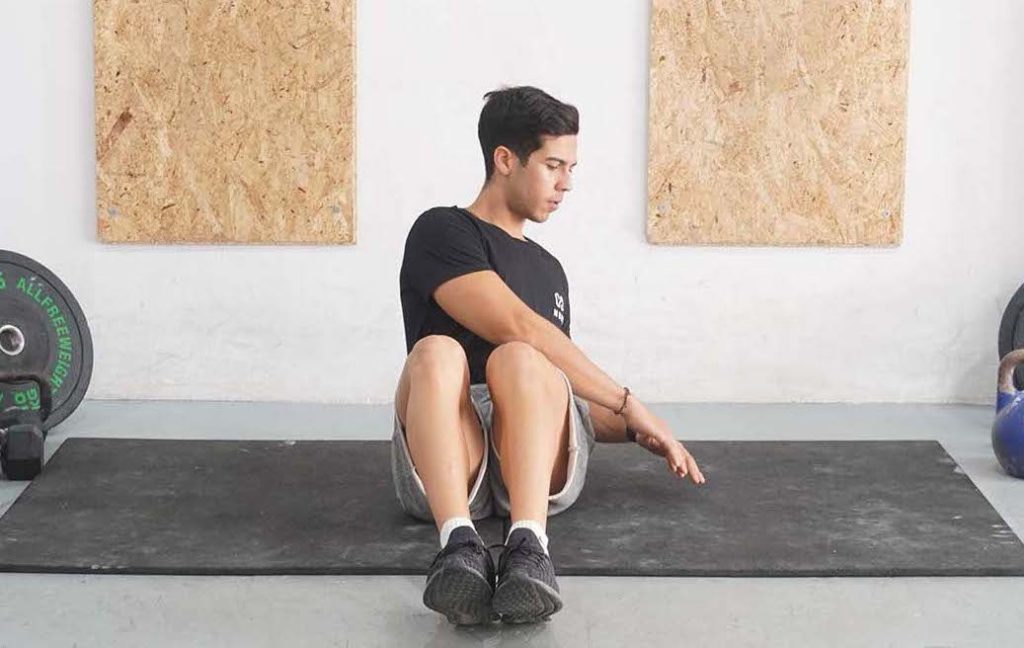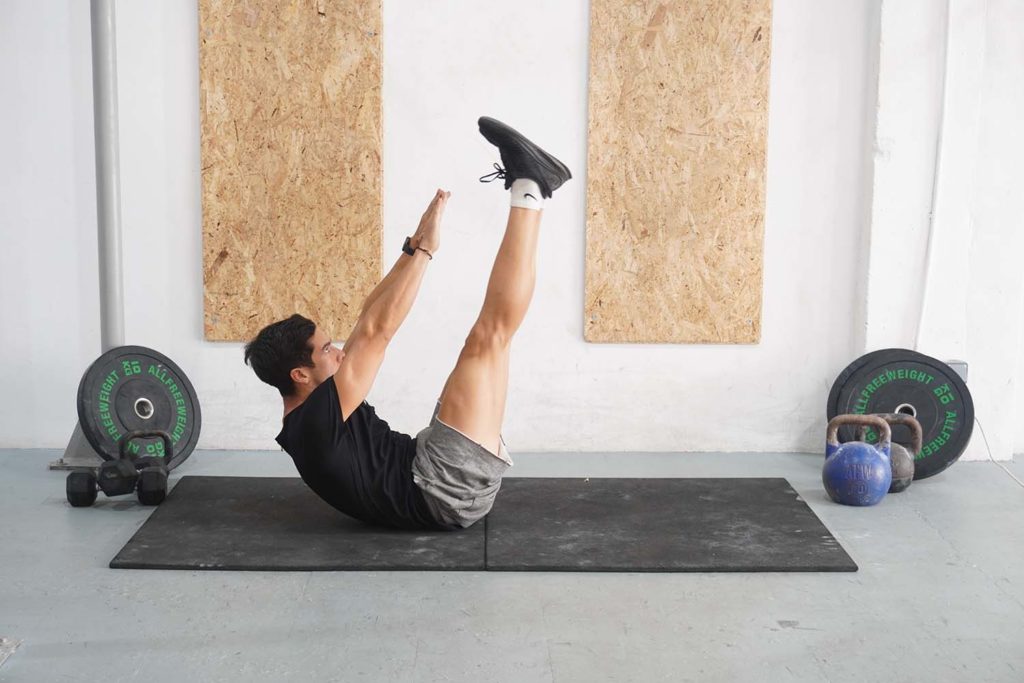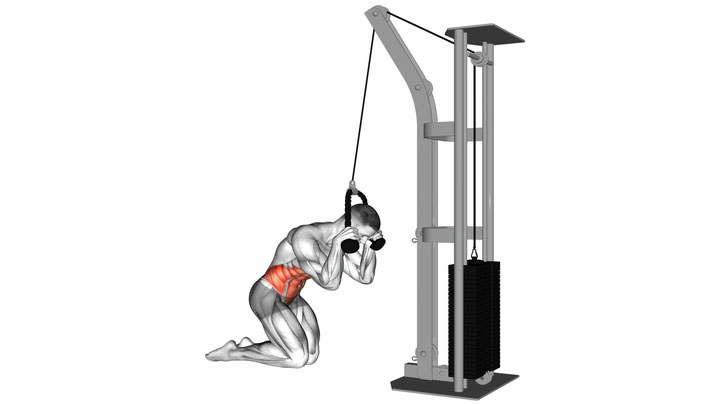The Benefits of the Weighted Russian Twist
Most gym-goers do an excellent job of training the primary patterns: the squat, hip hinge, push, and pull. The issue is, only some people consider another important aspect of strength and stability: twisting.
Our core is a complex collection of muscles that work together in many ways. One of their primary functions relates to producing or resisting rotation at the torso. Including movements that train rotation is essential for a solid core, better athletic performance, and lower injury risk.
Russian twists are one of the best rotational movements. Doing the exercise is beneficial for core stability, spinal support, and stronger obliques. Weighted Russian twists add a layer of difficulty for everyone who wants to take their core training to the next level and possibly improve their performance in basketball, throwing sports, martial arts, and more.
How to do the movement
- Sit on the floor with a light dumbbell, weight plate, or kettlebell by your side.
- Grab the weight with both hands and hold it in front of your chest with your elbows bent. Lean your torso slightly back and engage your abs to stay in position.
- Cross your feet, bend your knees slightly, and lift your feet a few inches off the floor. Doing so will allow your body to form a V-shape.
- With your feet steady, take a breath, and twist your torso to the right. Initiate the movement from your midsection and allow your arms to follow naturally. Don’t twist with your arms first because doing so will prevent optimal core engagement.
- Once you’ve twisted to the right, exhale.
- As you bring your torso to the left, take another breath and immediately twist to the left.
- Keep alternating between left and right, breathing as you do.
What muscles does the weighted Russian twist activate?
The primary muscles that work during a Russian twist are the internal and external obliques, positioned on either side of our abs. The main job of our obliques relates to torso rotation. Our internal and external obliques produce twisting and provide torso stability (1, 2).
Our rectus abdominis, the six-pack muscle, also works during Russian twists. The main job of the six-pack during Russian twists is to flex isometrically and keep us in the V-shape position. On a similar note, the transverse abdominis provides support and also keeps us in position.
The erector spinae also contribute during Russian twists. The long muscles run on either side of the spine and provide additional torso support (3).
Russian twists also involve the lower body to some degree. Our quadriceps flex isometrically to keep our legs in a position, primarily thanks to the rectus femoris (4). The hamstrings, our posterior thigh muscles, also contribute in the same way.
Tips on How to Execute the Russian Twist (Weighted) Effectively
The most important thing to remember for Russian twists is to initiate the movement from the torso and allow your arms to follow. As you’re in position, keep your arms in the direction of your torso and twist from your midsection. Doing so will allow you to engage your core muscles better.
Learning proper form is essential, so it’s best to start with the simplest version. You should start with the bodyweight version and gradually progress to weighted Russian twists. You can even have your feet on the floor initially as you learn proper torso rotation. Begin to experiment with lifting your feet off the floor once you’re confident in your twisting technique.
It’s also essential to maintain a solid position and do each repetition slowly and with reasonable control. The Russian twist is a safe movement, but excessive and dynamic twisting can lead to trouble. So, twist gradually to either side, breathe regularly, and engage your core muscles as you do.
Variations and Modifications of the Russian Twist (Weighted)
1. Bodyweight Russian Twist

The bodyweight version is the most accessible and beginner-friendly variation of the weighted Russian twist. We recommend starting with this to get a good feel for the movement before introducing external resistance. You can even have your feet on the floor initially. Doing so is great for being more stable and learning how to twist to the left and right.
2. Decline Bench Russian Twist (Weighted)
The decline bench Russian twist is a variation where you set yourself up on a decline bench and anchor your feet. Doing so is beneficial for reducing the stability requirements of the movement and overloading your obliques with more weight.
3. Stability Ball Russian Twist
The stability ball Russian twist is among the most challenging variations. First, you must place your upper back on a stability ball and anchor your feet on the floor. You can then begin to rotate to the left and right. The extra layer of difficulty is great for making your core muscles work even harder.
Mistakes to Avoid
A common mistake with weighted Russian twists is using too much resistance. The idea is that if some are good, more must be better. But too much weight on Russian twists prevents you from rotating well and only serves to put your spine in a compromised position.
Another significant mistake with Russian twists is not breathing regularly. The exercise is challenging, so it’s not always easy to count repetitions or breaths. Doing slow repetitions is beneficial for proper muscle engagement and optimal breathing patterns.
You should also avoid arching your lower back when doing Russian twists. Arching your back puts unnecessary stress on your spine and reduces core engagement. Avoid this by maintaining a slightly flexed spine by contracting your abs at the start of each set.
The final mistake to keep in mind is moving your knees from side to side. An effective Russian twist is about rotating your torso to the left and right. But your legs need to remain in a stable position relative to your upper body.
Similar Exercises to Russian Twists (weighted)
Lying Leg Rotations
The lying leg rotation is an excellent alternative to Russian twists. Both movements achieve a similar outcome, but leg rotations have you initiate the motion from your lower body and keep your torso stationary.
Cable Woodchop
The cable woodchop is a standing rotational exercise you can do to strengthen your core. Similar to Russian twists, you have to rotate to the left and right while holding onto weight. Cable woodchops are simpler to learn because the stability requirements aren’t as big. Plus, the cable provides constant resistance, which is beneficial for muscle growth.
V Up

The V up is hardly an oblique movement, but the exercise shares similarities to Russian twists. Most notably, the activity has you raise your legs and torso simultaneously, strengthening many of the muscles you would use during Russian twists. As a result, doing V ups can improve your stability and make you better at Russian twists.
Cable Crunch

The cable crunch is a fantastic assistance exercise that strengthens your entire core. What makes the movement great is the overload potential. You can do the movement with more weight as your abs get stronger. While not identical to Russian twists, the cable crunch is beneficial for overall core strength.

